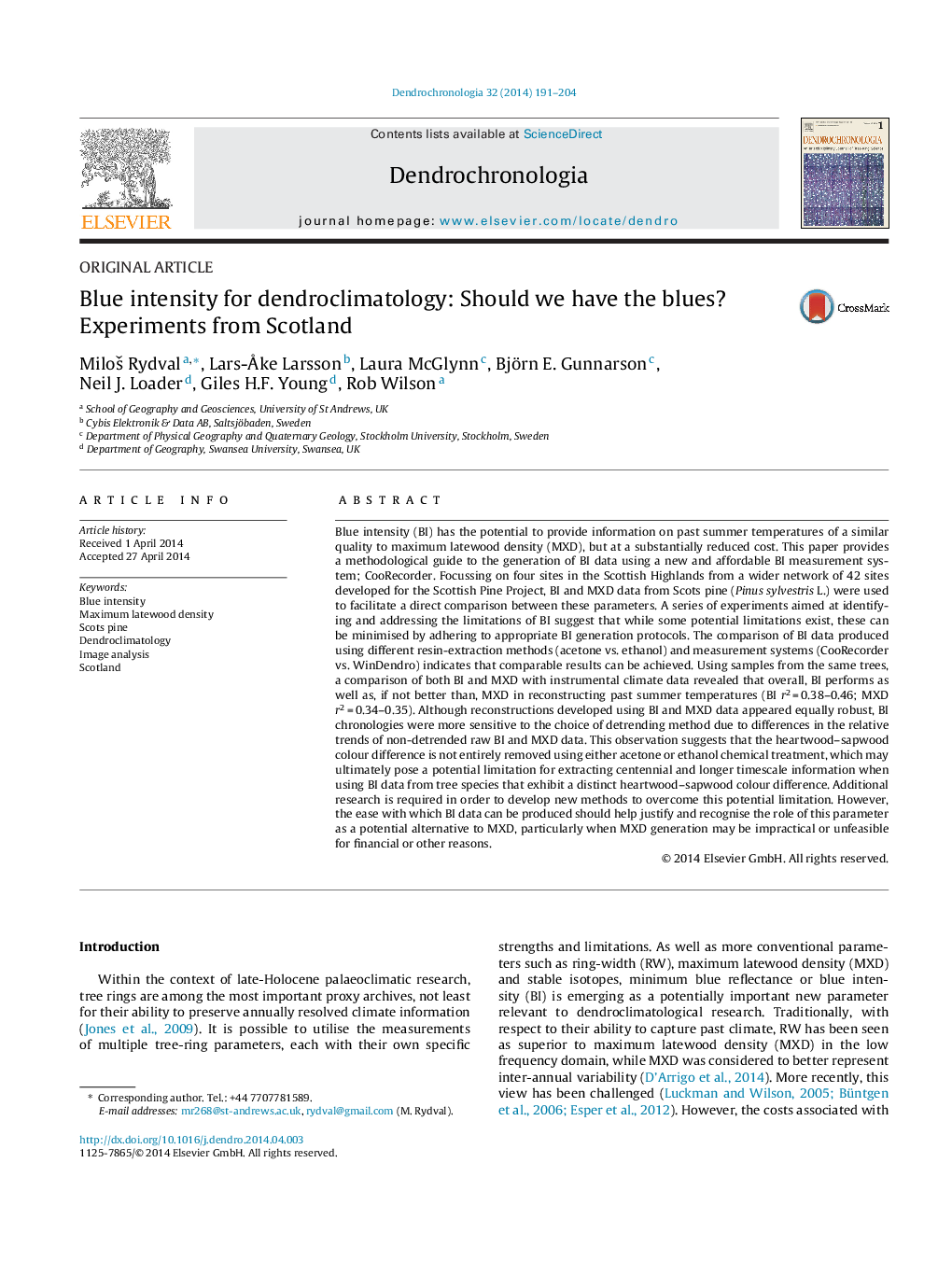| Article ID | Journal | Published Year | Pages | File Type |
|---|---|---|---|---|
| 85616 | Dendrochronologia | 2014 | 14 Pages |
Blue intensity (BI) has the potential to provide information on past summer temperatures of a similar quality to maximum latewood density (MXD), but at a substantially reduced cost. This paper provides a methodological guide to the generation of BI data using a new and affordable BI measurement system; CooRecorder. Focussing on four sites in the Scottish Highlands from a wider network of 42 sites developed for the Scottish Pine Project, BI and MXD data from Scots pine (Pinus sylvestris L.) were used to facilitate a direct comparison between these parameters. A series of experiments aimed at identifying and addressing the limitations of BI suggest that while some potential limitations exist, these can be minimised by adhering to appropriate BI generation protocols. The comparison of BI data produced using different resin-extraction methods (acetone vs. ethanol) and measurement systems (CooRecorder vs. WinDendro) indicates that comparable results can be achieved. Using samples from the same trees, a comparison of both BI and MXD with instrumental climate data revealed that overall, BI performs as well as, if not better than, MXD in reconstructing past summer temperatures (BI r2 = 0.38–0.46; MXD r2 = 0.34–0.35). Although reconstructions developed using BI and MXD data appeared equally robust, BI chronologies were more sensitive to the choice of detrending method due to differences in the relative trends of non-detrended raw BI and MXD data. This observation suggests that the heartwood–sapwood colour difference is not entirely removed using either acetone or ethanol chemical treatment, which may ultimately pose a potential limitation for extracting centennial and longer timescale information when using BI data from tree species that exhibit a distinct heartwood–sapwood colour difference. Additional research is required in order to develop new methods to overcome this potential limitation. However, the ease with which BI data can be produced should help justify and recognise the role of this parameter as a potential alternative to MXD, particularly when MXD generation may be impractical or unfeasible for financial or other reasons.
